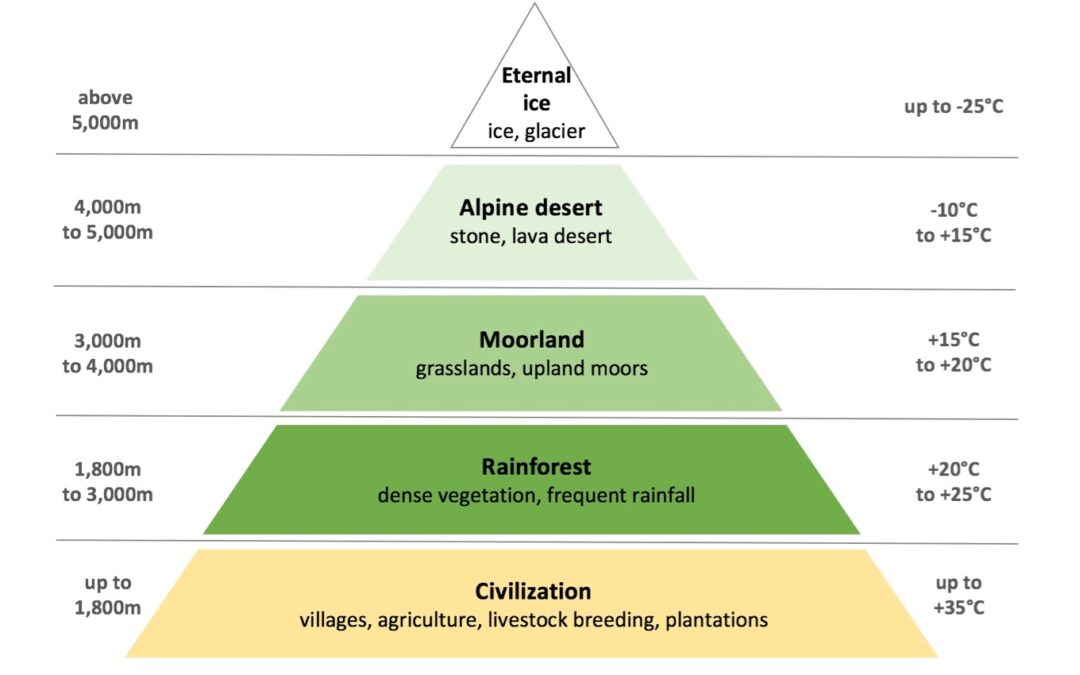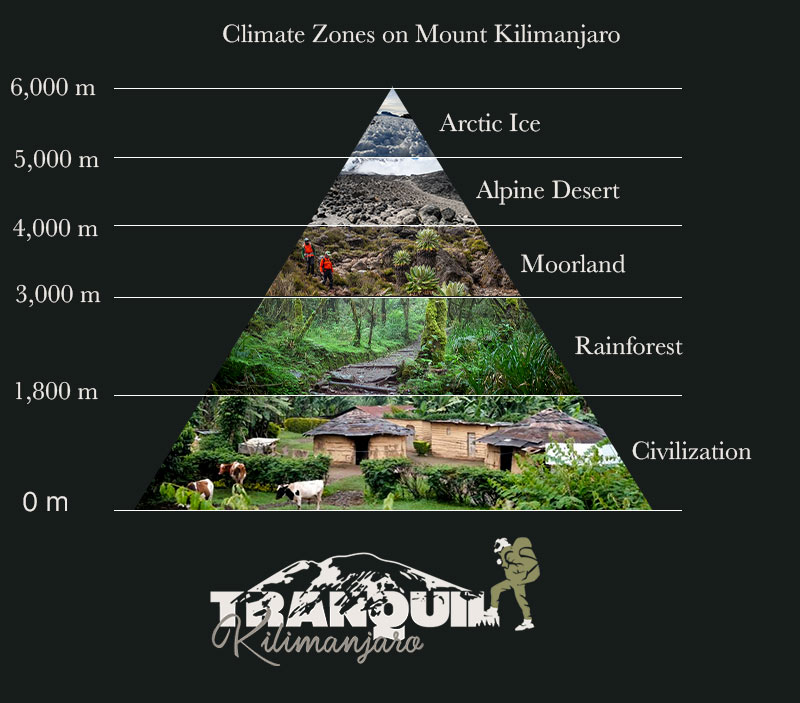Ascend the majestic slopes of Kilimanjaro, and you’ll traverse five distinct vegetation zones, from lush rainforests to barren alpine deserts. Each zone presents a unique ecosystem meticulously shaped by altitude and climate changes. This gradient of biodiversity is rare, making Kilimanjaro a living laboratory for ecological and environmental studies.
Historically, these vegetation zones have provided valuable insights into the resilience of plant species in varying climatic conditions. For instance, the montane forest zone, rich in endemic flora, plays a critical role in combating soil erosion. Remarkably, over 1,800 species of plants have been identified along Kilimanjaro’s slopes, underscoring its ecological significance and the intricate balance maintained across its elevation spectrum.
Exploring the Diverse Vegetation Zones of Kilimanjaro
Kilimanjaro is famous for its breathtaking variety of vegetation zones. Starting from the base, climbers are greeted by a lush rainforest filled with towering trees, vibrant ferns, and curious monkeys. This zone receives substantial rainfall, which supports the rich plant life. It’s a haven for diverse species, forming an important ecological foundation.
Beyond the rainforest lies the heath and moorland zone. This area is marked by tall grasses and shrubs, including the unique giant groundsels. The temperature drops, and the air becomes drier as altitude increases. Yet, it presents an impressive view of hardy plant species adapted to cooler conditions. The heath and moorland are crucial for understanding transition zones in mountainous regions.
Ascending higher, explorers encounter the alpine desert zone. Unlike the lush lower zones, this area has sparse vegetation, with plants such as tussock grasses able to survive. The harsh, dry conditions make it a challenging environment for life. However, some hardy plant species thrive, showcasing nature’s resilience. This zone offers a stark, beautiful contrast to the verdant areas below.
At the summit, vegetation is almost non-existent. The glacier-clad peak stands as a testament to the mountain’s extreme conditions. Only a few types of moss and lichen manage to survive here. The stark landscape is a reminder of the power of altitude and temperature. Kilimanjaro’s summit offers a unique glimpse into high-altitude ecosystems.
The Rainforest Base: A Lush Gateway to Higher Altitudes
The rainforest base of Kilimanjaro is an enchanting place teeming with life. The abundant rainfall nurtures towering trees, creating a dense canopy overhead. Beneath this canopy, ferns and other lush plants thrive. You might even spot a curious colobus monkey swinging from branch to branch. This vibrant ecosystem serves as the starting point for many adventurers.
The diversity of species in the rainforest is impressive. There are numerous bird species, including hornbills and turacos, adding music to the air. Insects, too, are plentiful, with butterflies adding splashes of color. The biodiversity here is a critical part of Kilimanjaro’s ecological richness. It highlights the importance of conserving such unique habitats.
One fascinating feature of the rainforest zone is the ancient trees. Some of these trees are hundreds of years old, standing tall as silent witnesses to time. They provide shelter and food for various animal species. The interdependence between plants and animals is evident. This interconnectedness makes the rainforest a vital ecological sanctuary.
For trekkers, the rainforest offers a refreshing start to their journey. The dense foliage provides welcome shade from the sun. As climbers ascend, they immerse in the sights and sounds of this verdant world. It’s an experience that sets the stage for the diverse zones they will encounter higher up. The rainforest base is truly a lush gateway to Kilimanjaro’s diverse vegetation zones.
The Heath and Moorland: Transitioning to Sparse Beauty
Upon leaving the rainforest, trekkers find themselves in the heath and moorland zone. This area is characterized by tall grasses, hardy shrubs, and scattered wildflowers. Giant lobelias and groundsel plants are notable inhabitants. These plants have adapted to cooler temperatures and reduced moisture, showing nature’s resilience. The landscape here begins to open up, offering expansive views.
Animal life in the heath and moorland is less diverse than in the rainforest. However, this zone is home to small mammals, like the four-striped grass mouse. Various birds, such as sunbirds, flit among the shrubs. These creatures rely on the adapted plants for food and shelter. Observing this interaction is fascinating for any nature enthusiast.
Heath and moorland vegetation can survive on less water. The plants’ adaptations include thick leaves to conserve moisture. As a result, these species demonstrate impressive survival strategies in a transitional environment. Their unique features are crucial for understanding ecological versatility. This zone teaches valuable lessons about adaptation and resilience.
For hikers, the moorlands offer a different kind of beauty. The vast, open spaces are a stark contrast to the dense rainforests below. The cool air and sweeping vistas provide a refreshing change. It’s a place where the sky feels closer and the landscape seems endless. The heath and moorland zone is a testament to Kilimanjaro’s ever-changing natural beauty.
Key Takeaways
- Kilimanjaro has diverse vegetation zones from rainforest to alpine desert.
- Each zone supports unique plant and animal life adapted to its climate.
- The rainforest base is lush and full of biodiversity.
- The heath and moorland are characterized by hardy shrubs and grasses.
- The summit’s harsh conditions support only a few tough species.



